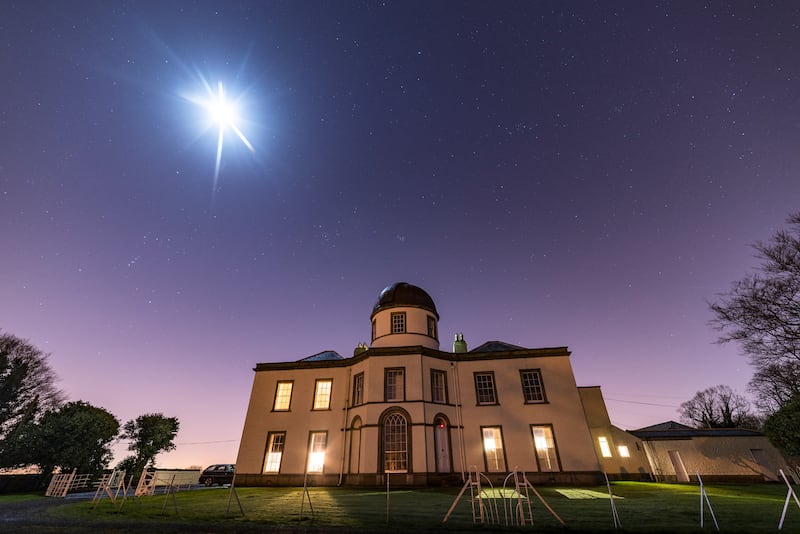
[ad_1]
Three of the most prominent astronomical sites in Ireland will be offered to the state of the World Heritage website from the United Nations Educational, Scientific and Cultural Organization, known as UNESCO.
The Birr Observatory in Co Offaly, Dunsink Observatory in Dublin and the Armag and Planetarium Observatory is part of a cross -border plan to highlight the country’s legacy in astronomy.
The three websites formed astronomical betrayals in Ireland (AOI) in 2023 To create a program for joint work.
It has been added to the initial World Heritage List for Ireland and the United Kingdom. This is the first step in the process of obtaining a World Heritage Status for a site.
Ireland already has three UNESCO World Heritage sites: Brú Na bóinne in Co Meath, Squellig Michael, Co Kerry, The Giant’s Coruseway and Coruse Coast in Co Antrim.
The three bets were added to look at the Irish menu, which also includes the scene of the Traffic Terry of the Stone Age in Co Sligo, the Atlantic Cable (Kerry and Canada) and royal sites across the island.
The Chairman of the Board of Bir Dimisen Castle and Director of Professor Professor at Dunsenk Peter Galgar said that Ireland’s contribution to astronomy in the nineteenth century “cannot be exaggerated.”

The Birr Telescope, which was built by William Parsons in 1845, was the world’s largest telescope in 70 years. Parsons was the first to notice spiral galaxies.
William Roin Hamilton, who used the Dunsink Observatory regularly, was a global leader in optics and quantum mechanics that are still used in astronomical study.
Professor Gallaghar said that preparing for the initial list took five years and it may take another five years before granting UNESCO, but the waiting is worth it.
He said: “We need to protect, preserve, preserve the heritage of all three sites, as well as educate the importance of science for society and inspire the next generation.”

The Dunsink Observatory is run by the Dublin Institute for Advanced Studies (DIAS). The CEO, Dr. Eucharia Meehan, said that obtaining an initial situation was “a wonderful recognition of the heritage of the unique historical observatories and the return to this World Heritage Day.”
“We also acknowledge the support of the three local authorities – the Vennjal Provincial Council, the Ovali Provincial Council, the Aragma City Council, and the Crajavone Buro Council, which both embraced the importance of the observatory and the value of the observatory in their area,” said Dr. Mihhan.
Armag Observatory was established in 1790 and is the longest operating observatory in the United Kingdom or Ireland.
Its director, Professor Michael Burton, said that Arjag was a pioneer in the modern astronomical observatory with a telescope attached to a berth inside a roundabout in the eighteenth century.
He said: “We are now looking to work with our Birr and Dunsink partners in the search for a naming to the initial list of the United Kingdom, the next stage of the trip towards the search for UNESCO’s adoption.”
National Milestones and OPW service will now focus on supporting historical astronomical beta in Ireland to develop their nomination in partnership with Northern Ireland.
Heritage Minister James Brown said that adding astronomical bets in Ireland to the initial list was “the first official step on an exciting journey towards the World Heritage Inspection of three noticeable centers.”
He said: “These places of scientific endeavor embody historical cooperation throughout the island. It displays our wonderful heritage on the world stage, and the journey of this project in the years will enhance cooperation between the north and the south to a large extent with the common benefits of these places and their societies.”
